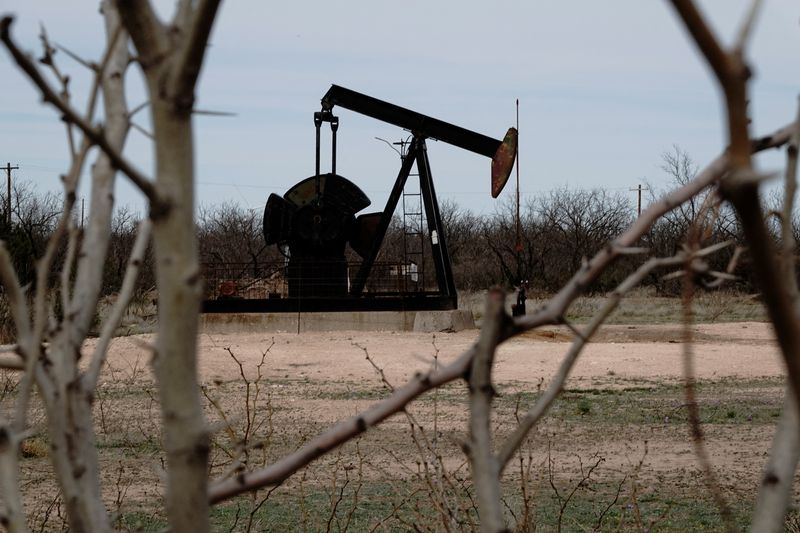Oil flat, poised to end week higher on Fed rate cuts, lower US supply
By Georgina McCartney
(Reuters) -Oil prices were steady on Friday and set for a second straight week of gains, garnering support on a large cut in U.S. interest rates and a dip in U.S. supply.
Brent futures were down 3 cents, or 0.04%, at $74.85 a barrel at 1:52 p.m. EDT. U.S. WTI crude futures gained 39 cents, or 0.54%, to $72.34.
Signs of a slowing economy in major commodity consumer China gave prices a ceiling. But for the week, both benchmarks were up around 5%.
Prices have recovered after Brent fell below $69 for the first time in nearly three years on Sept. 10.
"The market concluded that a sub-$70 level combined with hedge funds holding a record weak belief in higher prices of crude and fuel products would require a recession to be justified, a risk this week's bumper U.S. rate cut helped reduce," Ole Hansen, head of commodity strategy at Saxo Bank, said.
Prices rose more than 1% on Thursday, a day after the U.S. central bank's decision to cut interest rates by half a percentage point.
Interest rate cuts typically boost economic activity and energy demand, but some analysts view are worried about weakness in the U.S. labour market.
"U.S. interest rate cuts have supported risk sentiment, weakened the dollar and supported crude this week," said Giovanni Staunovo, an analyst at UBS.
"However, it takes time until rate cuts support economic activity and oil demand growth," he added.
The Fed projected a further 50 basis points of rate cuts by the end of this year, a full percentage point of cuts next year and a further half-percentage-point reduction in 2026.
"The Fed's decision to cut interest rates and some hangover from hurricane Francine are the only two things that are propping up the market up right now," said Tim Snyder, chief economist at Matador Economics.
"The thought that another 50 to 75 basis points has markets hopeful for some degree of economic stability," he added.
About 6% of crude production and 10% of natural gas output in the U.S. Gulf of Mexico were offline in the aftermath of Hurricane Francine, the U.S. Bureau of Safety and Environmental Enforcement (BSEE) said in its final update following the storm, on Tuesday.
Additional support for oil prices came from a decline in U.S. crude inventories to a one-year low last week. [EIA/S]
A counter-seasonal oil market deficit of around 400,000 barrels per day (bpd) will support Brent crude prices in the $70 to $75 a barrel range during the next quarter, Citi analysts said on Thursday, though they added that prices could plunge in 2025.
Rising tensions in the Middle East, raising the risk of supply disruption, further boosted the oil market. Israeli Prime Minister Benjamin Netanyahu issued a statement following the assassination of a senior Hezbollah commander on Friday, declaring Israel's goals were clear and its actions speak for themselves, Israeli media reported.
Still, U.S. President Joe Biden said reaching a Gaza ceasefire deal remains realistic, at the White House on Friday, telling reporters: "We have to keep at it."
In China, refinery output slowed for a fifth straight month in August and industrial output growth hit a five-month low.
China also issued its third and likely final batch of fuel export quotas for the year, keeping volume in line with 2023 levels.
"This move indicates that refinery margins are too weak to justify increased activity," StoneX Analyst, Alex Hodes said in a note on Friday.
Meanwhile, oil refiners in Asia, Europe and the U.S. face a drop in profitability to multi-year lows.
The weakness is a further sign of soft consumer and industrial demand, especially in China, because of slowing economic growth and rising penetration of electric vehicles.
Source: Investing.com
